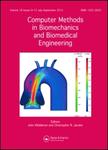版权所有:内蒙古大学图书馆 技术提供:维普资讯• 智图
内蒙古自治区呼和浩特市赛罕区大学西街235号 邮编: 010021

作者机构:Politecn Milan Dept Chem Mat & Chem Engn Giulio Natta Lab Biol Struct Mech LaBS Milan Italy BETA CAE Italy Srl Turin Italy
出 版 物:《COMPUTER METHODS IN BIOMECHANICS AND BIOMEDICAL ENGINEERING》 (生物力学和生物医学工程中的计算机方法)
年 卷 期:2021年第24卷第4期
页 面:375-383页
核心收录:
学科分类:0831[工学-生物医学工程(可授工学、理学、医学学位)] 08[工学] 09[农学] 0901[农学-作物学] 0836[工学-生物工程] 090102[农学-作物遗传育种] 0812[工学-计算机科学与技术(可授工学、理学学位)]
主 题:Transcatheter aortic valve fluid-structure interaction finite element analysis paravalvular leakage
摘 要:Transcatheter aortic valve replacement (TAVR) strongly depends on the calcification patterns, which may lead to a malapposition of the stented valve and complication onsets in terms of structure kinematics and paravalvular leakage (PVL). From one anatomical-resembling model of the aortic root, six configurations with different calcific deposits were built. TAVR fluid-structure interaction simulations predicted different outcomes for the different calcifications patterns in terms of the final valve configuration in the implantation site and the PVL estimations. In particular models with deposits along the cups coaptation resulted in mild PVL, while those with deposits along the attachment line in moderate PVL.